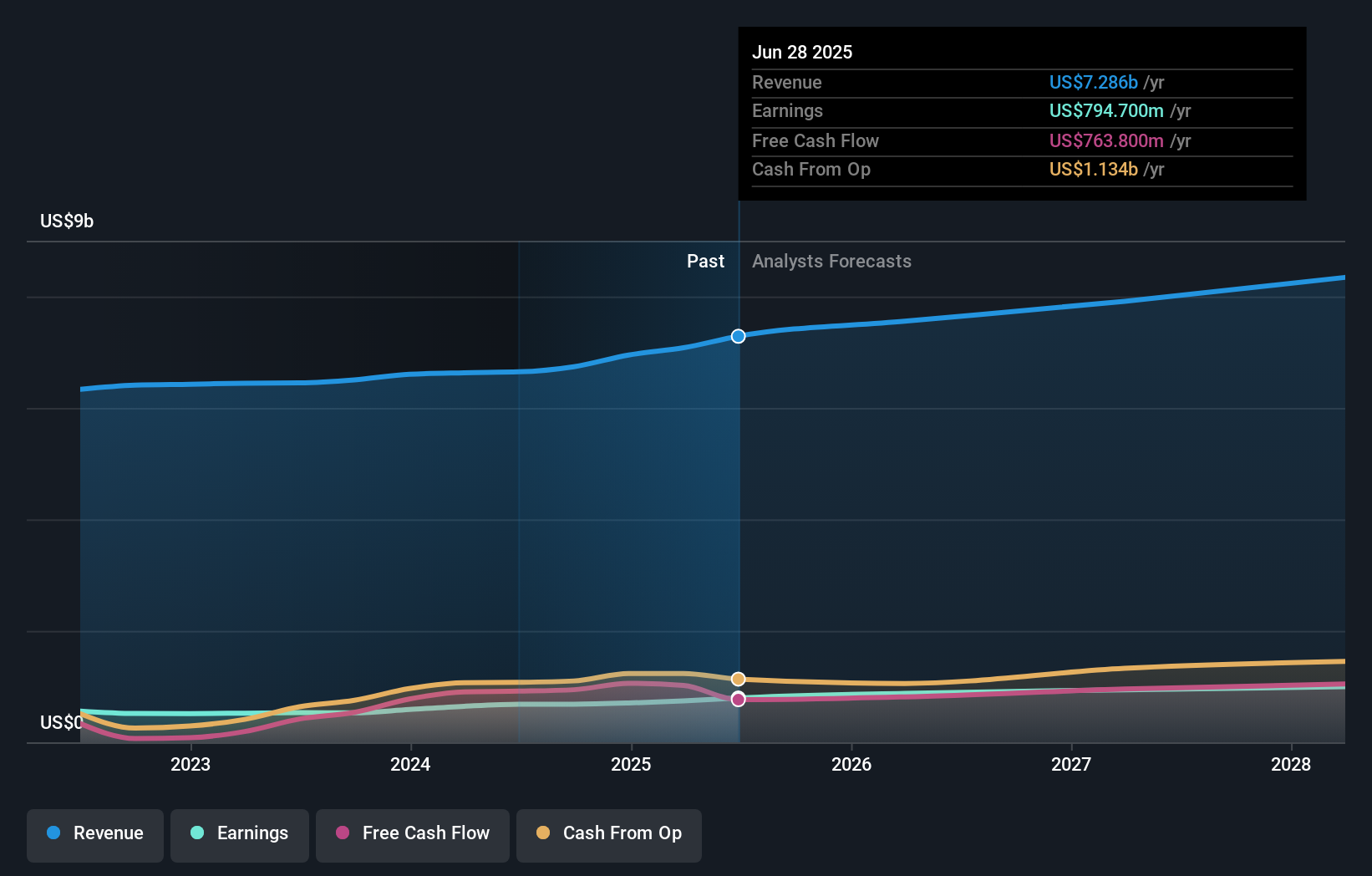
The quarterly results for Ralph Lauren Corporation (NYSE:RL) were released last week, making it a good time to revisit its performance. It was a workmanlike result, with revenues of US$1.7b coming in 3.8% ahead of expectations, and statutory earnings per share of US$3.52, in line with analyst appraisals. The analysts typically update their forecasts at each earnings report, and we can judge from their estimates whether their view of the company has changed or if there are any new concerns to be aware of. So we collected the latest post-earnings statutory consensus estimates to see what could be in store for next year.

After the latest results, the 16 analysts covering Ralph Lauren are now predicting revenues of US$7.56b in 2026. If met, this would reflect a reasonable 3.7% improvement in revenue compared to the last 12 months. Per-share earnings are expected to increase 9.5% to US$14.36. Yet prior to the latest earnings, the analysts had been anticipated revenues of US$7.42b and earnings per share (EPS) of US$13.94 in 2026. The analysts seems to have become more bullish on the business, judging by their new earnings per share estimates.
See our latest analysis for Ralph Lauren
There's been no major changes to the consensus price target of US$339, suggesting that the improved earnings per share outlook is not enough to have a long-term positive impact on the stock's valuation. It could also be instructive to look at the range of analyst estimates, to evaluate how different the outlier opinions are from the mean. Currently, the most bullish analyst values Ralph Lauren at US$423 per share, while the most bearish prices it at US$175. This is a fairly broad spread of estimates, suggesting that analysts are forecasting a wide range of possible outcomes for the business.
Of course, another way to look at these forecasts is to place them into context against the industry itself. We would highlight that Ralph Lauren's revenue growth is expected to slow, with the forecast 5.0% annualised growth rate until the end of 2026 being well below the historical 8.1% p.a. growth over the last five years. Juxtapose this against the other companies in the industry with analyst coverage, which are forecast to grow their revenues (in aggregate) 5.7% annually. So it's pretty clear that, while Ralph Lauren's revenue growth is expected to slow, it's expected to grow roughly in line with the industry.
The Bottom Line
The most important thing here is that the analysts upgraded their earnings per share estimates, suggesting that there has been a clear increase in optimism towards Ralph Lauren following these results. They also reconfirmed their revenue estimates, with the company predicted to grow at about the same rate as the wider industry. There was no real change to the consensus price target, suggesting that the intrinsic value of the business has not undergone any major changes with the latest estimates.
With that in mind, we wouldn't be too quick to come to a conclusion on Ralph Lauren. Long-term earnings power is much more important than next year's profits. At Simply Wall St, we have a full range of analyst estimates for Ralph Lauren going out to 2028, and you can see them free on our platform here..
That said, it's still necessary to consider the ever-present spectre of investment risk. We've identified 1 warning sign with Ralph Lauren , and understanding it should be part of your investment process.
Have feedback on this article? Concerned about the content? Get in touch with us directly. Alternatively, email editorial-team (at) simplywallst.com.
This article by Simply Wall St is general in nature. We provide commentary based on historical data and analyst forecasts only using an unbiased methodology and our articles are not intended to be financial advice. It does not constitute a recommendation to buy or sell any stock, and does not take account of your objectives, or your financial situation. We aim to bring you long-term focused analysis driven by fundamental data. Note that our analysis may not factor in the latest price-sensitive company announcements or qualitative material. Simply Wall St has no position in any stocks mentioned.